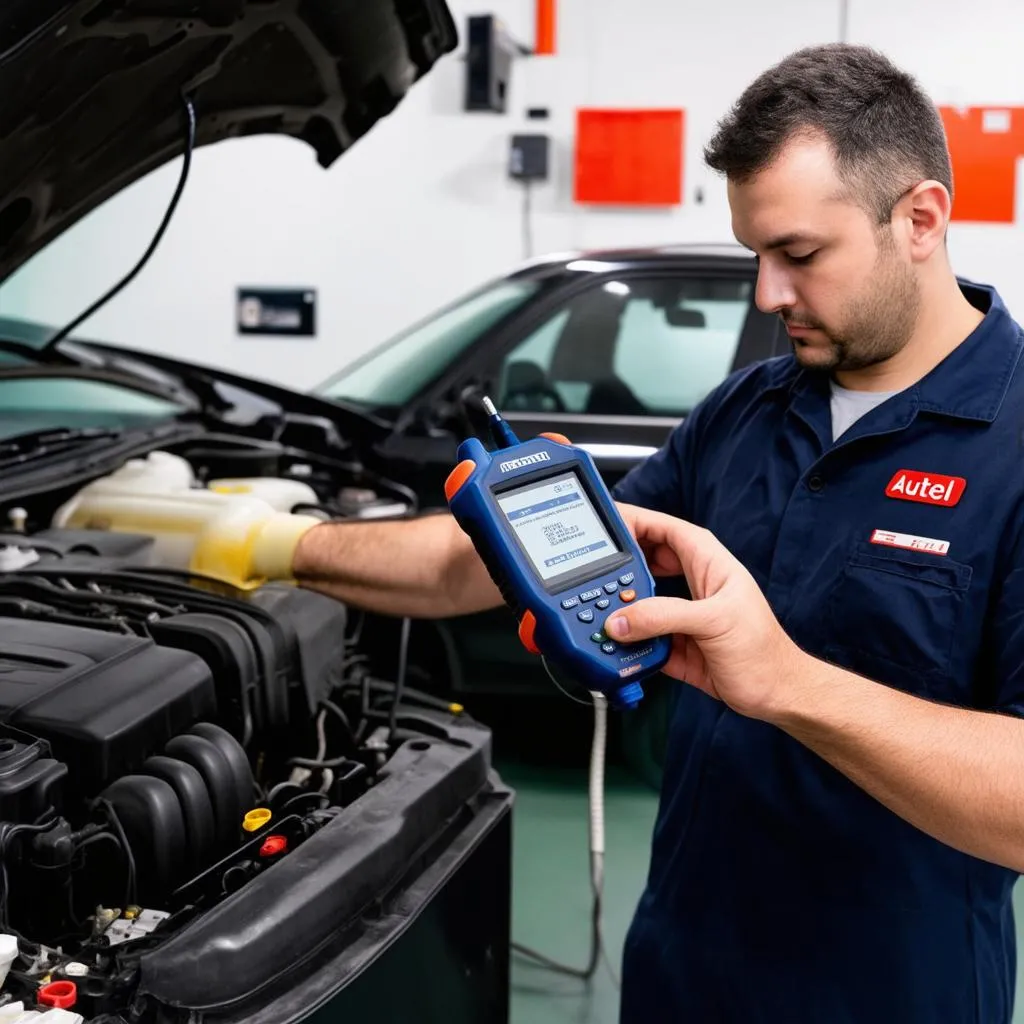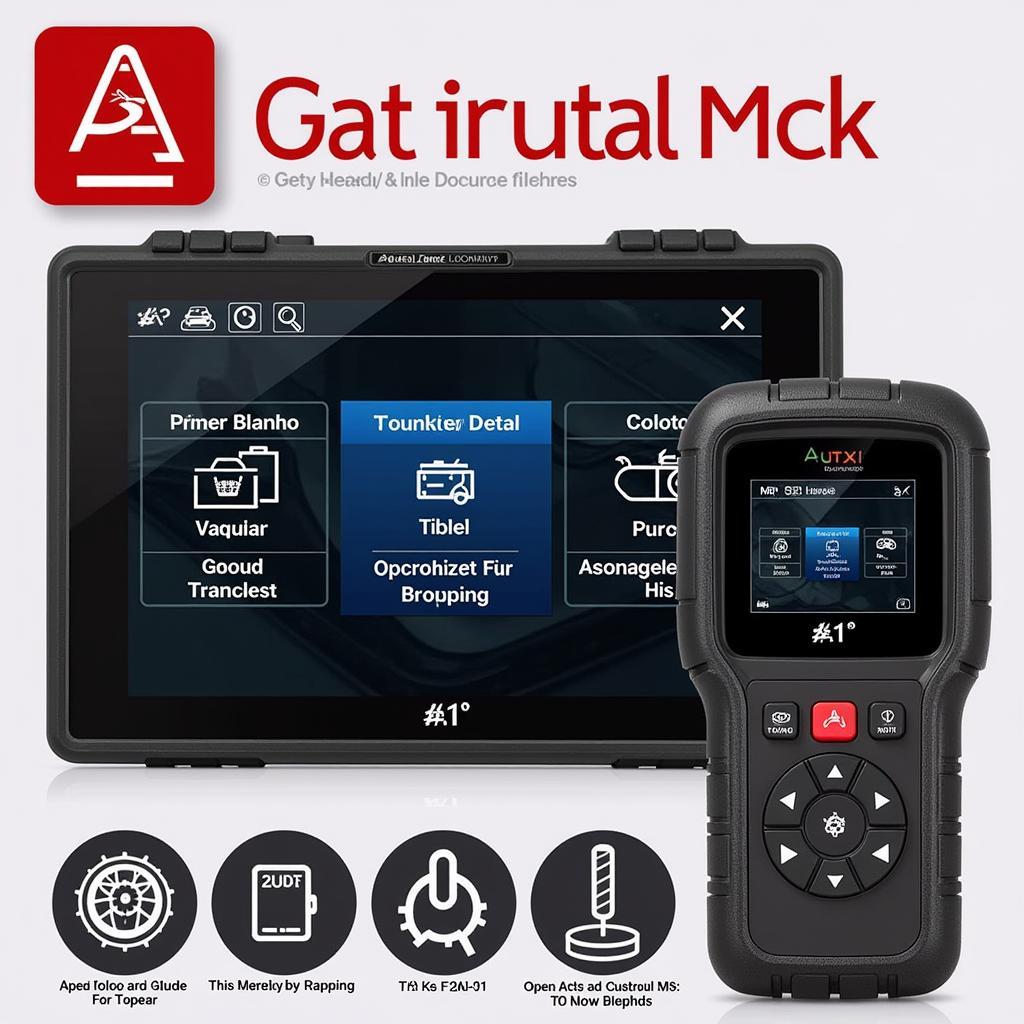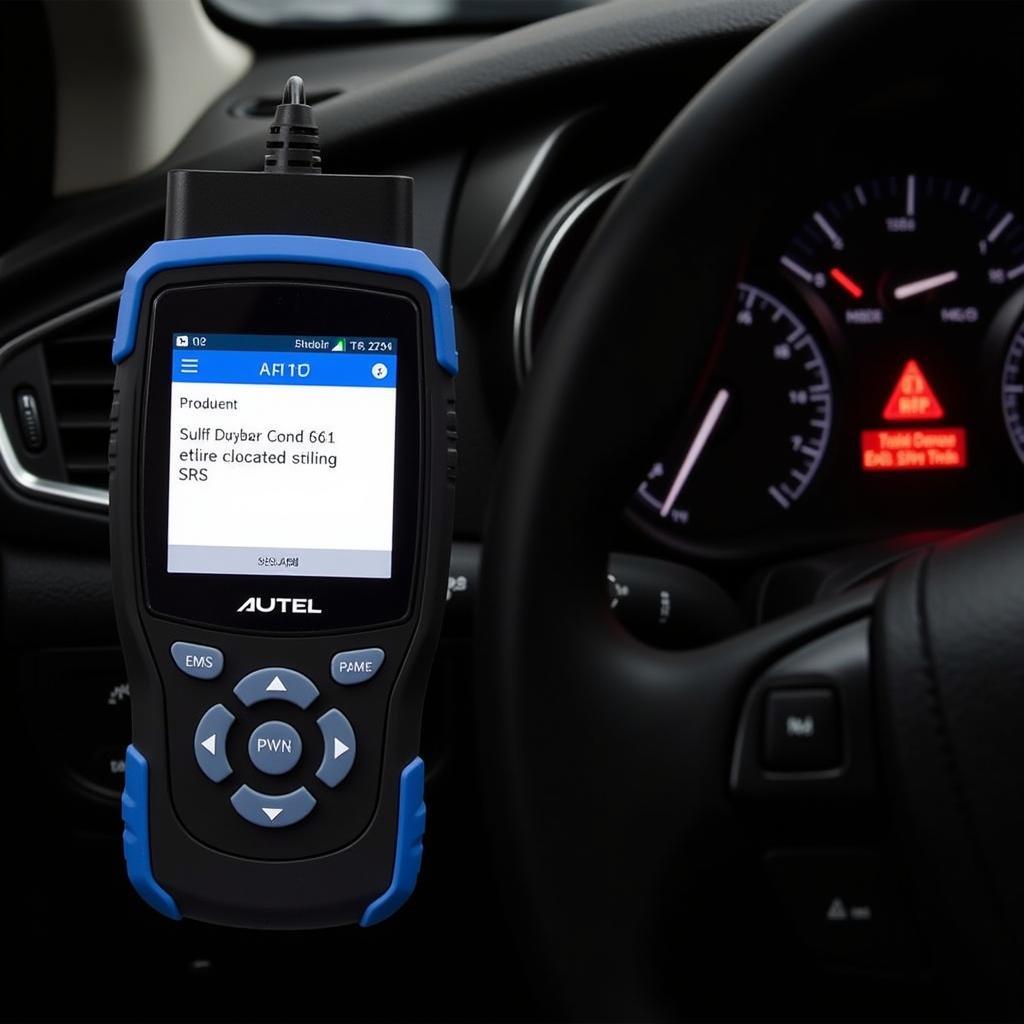“Have you ever tried to open the wrong door with the right key?” my mentor, old man Johnson, once asked me, his eyes twinkling with mischief. That, my friend, is like using an Autel scanner to trigger a component when you should be programming it. Both actions might seem related, but they lead to drastically different outcomes.”
That statement stuck with me throughout my years as an automotive technician, especially when dealing with the intricate world of European cars and their complex electrical systems. Autel scanners, with their powerful diagnostic and programming capabilities, have become indispensable tools in my arsenal. But the question remains – what exactly is the difference between triggering and programming with an Autel scanner?
Understanding the Core Concepts
Let’s break down the jargon and understand what “triggering” and “programming” actually mean in the context of automotive diagnostics and repair.
Triggering: Sending a Wake-up Call
Imagine you’re trying to get your friend’s attention on a crowded street. You wouldn’t just stand there silently, hoping they’d notice you. You’d call out their name, wave your hand, or maybe even give them a gentle nudge. That, in essence, is what triggering does.
When you trigger a component using your Autel scanner, you’re sending it a specific command to perform a function. Think of it as sending a brief electrical pulse to activate the component and observe its response. This is incredibly helpful for:
- Component Isolation: Suspect a lazy fuel injector or a sluggish ABS module? Triggering lets you individually activate these components to pinpoint the faulty one.
- System Verification: Just replaced a faulty sensor? Triggering helps you ensure the new sensor is communicating correctly with the ECU.
- Dynamic Testing: Need to check if the cooling fan kicks in at the right temperature? Triggering lets you simulate real-world scenarios.
Programming: Rewriting the Rulebook
Now, imagine you want your friend to learn a new skill, like playing a specific tune on the guitar. Simply asking them to play it won’t suffice. You need to teach them the chords, the strumming pattern, the nuances – in essence, you need to program their understanding.
Similarly, programming with an Autel scanner involves modifying the software or firmware within an Electronic Control Unit (ECU). This could involve:
- Software Updates: Just like your smartphone needs the latest software for optimal performance, ECUs often require updates to address bugs, improve efficiency, or adapt to new hardware.
- Component Coding: Installed a new part? Sometimes, you need to “introduce” it to the car’s ECU by programming specific codes, ensuring seamless integration.
- Customization: Some Autel scanners allow for customization options, enabling you to fine-tune certain vehicle parameters within safe limits.
Why the Confusion?
The line between triggering and programming can sometimes seem blurry, especially to those new to the world of automotive diagnostics. This is primarily because:
- Overlapping Functionality: Some Autel scanners offer both triggering and programming capabilities, leading to potential confusion about which function is being used.
- Similar Terminology: Certain actions, like forcing a regeneration cycle in a Diesel Particulate Filter, might be referred to as either “triggering” or “programming” depending on the specific software and interface.
Real-World Scenarios: When to Trigger and When to Program
Let’s say your customer’s Mercedes-Benz C-Class rolls into your shop with a warning light glaring on the dashboard. After connecting your trusty Autel scanner, you discover a fault code related to the ABS system. Here’s how triggering and programming might come into play:
- Triggering: You could use your Autel scanner to trigger each ABS solenoid individually. This helps you determine if a specific solenoid is malfunctioning or if the issue lies elsewhere in the system.
- Programming: If you determine the ABS module itself is faulty and needs replacement, you’ll likely need to program the new module using your Autel scanner. This ensures the new module is properly coded to your specific vehicle, taking into account factors like engine size, drivetrain, and other installed options.
 Autel Scanner Diagnosing ABS Module
Autel Scanner Diagnosing ABS Module
Autel: Bridging the Gap Between Mechanics and Electronics
Autel scanners, especially those designed for European vehicles like the MaxiSys series, have earned a solid reputation among mechanics for their user-friendliness and comprehensive capabilities. They act as a bridge, allowing us to delve into the intricate world of automotive electronics and address issues effectively.
However, it’s crucial to remember:
“Just because you have a hammer, doesn’t mean everything is a nail,” another wise mechanic once told me. Understanding the difference between triggering and programming, and when to employ each technique, is crucial for using your Autel scanner safely and effectively.
Frequently Asked Questions
Here are some common questions we receive about Autel scanners and their capabilities:
- Can I accidentally damage my car by triggering or programming with an Autel scanner? While Autel scanners are designed with safety in mind, it’s always best to follow instructions carefully and understand the potential risks associated with any diagnostic or programming procedure. Incorrectly programming an ECU, for example, could potentially lead to drivability issues.
- Do I need a different Autel scanner for triggering and programming? Not necessarily. Many Autel scanners offer both capabilities. However, the specific functions available will depend on the scanner model and the vehicle you’re working on.
- What are some other terms related to “triggering” and “programming” that I might encounter? You might come across terms like “actuation test,” “bi-directional control,” “flashing,” “coding,” or “adaptation” which all fall under the umbrella of diagnostic and programming functions.
 Mechanic Using Autel Scanner to Program ECU
Mechanic Using Autel Scanner to Program ECU
Explore Further
Interested in diving deeper into the world of Autel scanners and automotive diagnostics? Here are some related topics you might find helpful:
- Autel MaxiScan MS409 Review: Learn about this entry-level Autel scanner and its capabilities. (Link to Autel MaxiScan MS409 Review article on diagxcar.com)
Need Expert Assistance?
Feeling overwhelmed with your Autel scanner or unsure about a specific diagnostic or programming procedure? Don’t hesitate to reach out! Our team of automotive experts is available 24/7 to provide guidance and support. Contact us via WhatsApp at +84767531508, and let us help you navigate the world of automotive electronics with confidence.
In Conclusion
Mastering the nuances of your Autel scanner can significantly enhance your diagnostic and repair capabilities. Remember, knowledge is power, and in the world of modern automotive technology, that knowledge can be the key to unlocking a smoother, more efficient, and ultimately, more rewarding repair experience.


